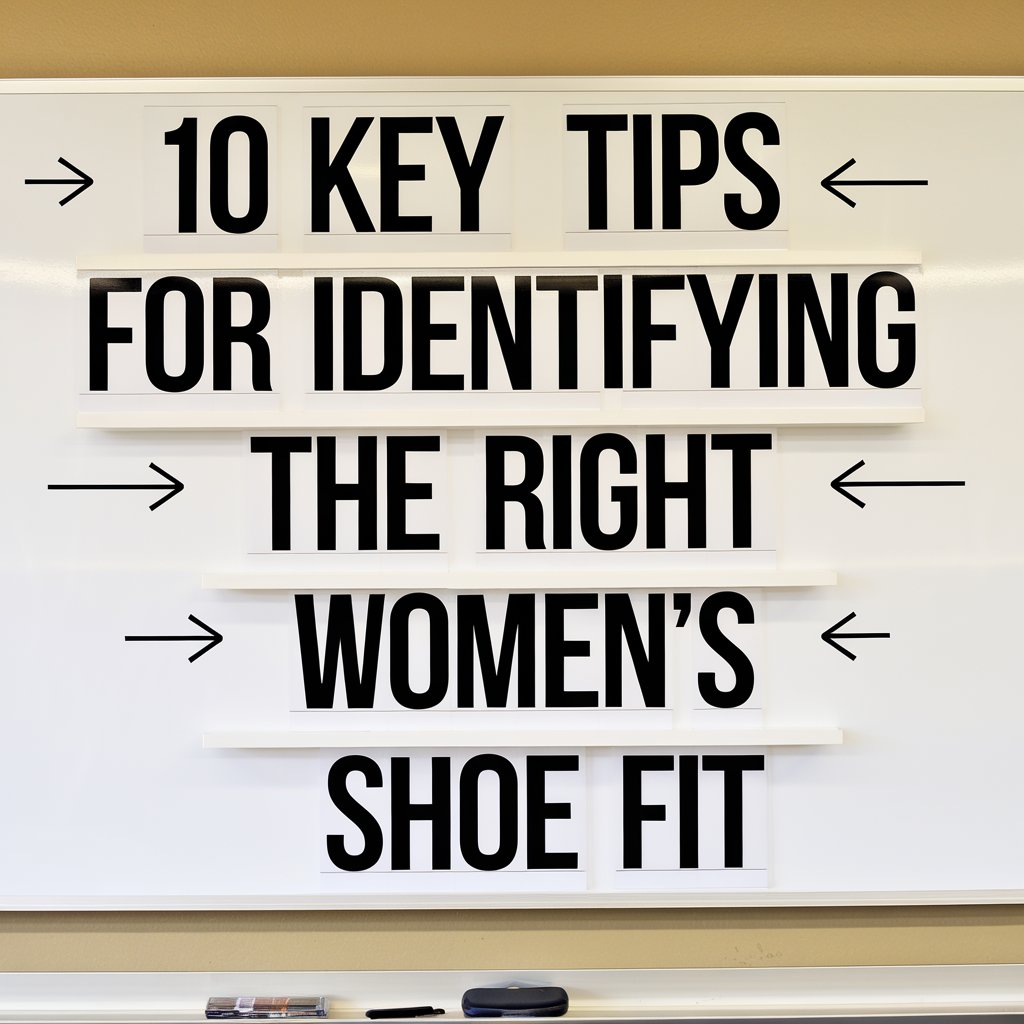Finding the perfect pair of shoes can make all the difference in your comfort and style. To ensure you select the right fit, this article will provide ten key tips that will help you choose women’s shoes that look great and feel comfortable.
1. Know Your Exact Shoe Size
First things first, establish the precise size of your shoes. It is essential to take measurements of your feet on a regular schedule because your feet have the potential to change over time. When standing, it is important to take measurements of both feet because one can be slightly larger than the other.
Also, if you need exact measurements, you should use a ruler or measuring tape. After that, consult a size chart to make certain that the measurements you have taken correspond to the appropriate shoe size. This information will help you find comfortable, well-fitting shoes.
2. Understand Shoe Width
Keep in mind that the width of the shoe is equally important as the length when it comes to getting the perfect fit. Your feet may experience discomfort and issues if you wear shoes that are either too small or too wide. Check out the many width options for the shoes you want. Shoe labels often include the following:
- B for narrow
- D for broad
- E for extra wide
On top of that, choosing the appropriate width is critical for ensuring comfort and support. In order to avoid any discomfort and to achieve a better fit, it is essential that you choose the width that corresponds to the size of your foot.
3. Consider the Shoe Shape
Depending on what kind of foot you have, different shoe styles and shapes will function better for you. If you have wider feet, for instance, you could find that shoes with rounded toes are comfortable for you since it provides more space. But, if your feet are slightly narrower, you may find that shoes with pointed toes fit you better because it keeps your foot in place.
Plus, when selecting footwear, consider the shape of your feet and select styles that are suitable for your shoes. This gives you more comfort and a better fit. Having good-fitting shoes can make a difference in how you feel throughout the day and can also help prevent foot problems.
4. Try Shoes on Later in the Day
You shouldn’t be afraid to try on shoes in the afternoon or evening every other day. By trying on shoes later in the day, you will be able to find a fit that is comfortable throughout the entire day. This is because feet tend to swell as the day progresses. To add on, Women’s Shoes that are comfortable while your feet are smaller may become too tight for you to wear during the swelling process.
5. Walk Around in the Shoes
As you try on the shoes by walking around the store or your house, make a note in your mind of how each one feels on your feet. This allows you to determine whether or not it is comfortable and fits nicely. Pay close attention to any areas that have a tight or painful sensation. Any discomfort that you experience while taking this test is an indication that you might require a different size or design.
6. Look for Proper Arch Support
Always bear in mind that having adequate arch support is essential to maintaining the health and comfort of your feet. Your foot’s arch type, which can be high, medium, or low, determines the amount of support you need.
Furthermore, you should look for shoes that provide the appropriate amount of support for your arch type. Wearing shoes that provide enough arch support can also enhance your posture and reduce the pressure on your legs and back.
7. Evaluate the Shoe’s Flexibility
Don’t forget that shoes need to be flexible to move comfortably with your feet. To check flexibility, bend and twist the shoe. A suitable shoe should have some flexibility to accommodate your foot’s movements but also enough structure to provide proper support. Make sure the shoe you choose can flex in response to your foot’s natural movements while still offering the support you need.
8. Pay Attention to the Shoe’s Material
Selecting leather can stretch and become softer, providing a personalized feel. Suede also molds to your foot, but it might require a bit more maintenance to keep it looking good. On the other hand, synthetic materials are less adaptable to your foot. It may be more durable and easier to clean than leather or suede, but it is less comfortable.
9. Check for Heel Height and Cushioning
Lots of women don’t realize how much heel height and cushioning can affect the comfort and foot health. When picking shoes, choose a heel height that fits your daily activities. If you’re on your feet a lot, a lower heel is usually better for your feet. Buy shoes with good sole cushioning because it absorbs the shock from walking and reduces strain on your feet.
10. Seek Professional Fitting
If you’re not sure about your shoe size or how a pair will fit, think about getting a professional fitting. Many shoe stores provide this service, and it can be very helpful. A professional can measure your feet accurately and suggest the best size and fit for you.
Asking help from professionals can also offer advice on which shoe styles are best for your foot shape and specific needs. This way, you can ensure that you choose shoes that are comfortable and supportive, avoiding the hassle of returns or discomfort from ill-fitting footwear.
Find Your Perfect Fit and Step Confidently in Comfort!
Searching for the perfect fit in women’s shoes is more than just choosing a size. You can make better choices by measuring your feet, determining your width, trying on shoes later in the day, and checking for comfort and support. When you find the right fit, you’ll experience more comfort and feel more confident in your shoes.






